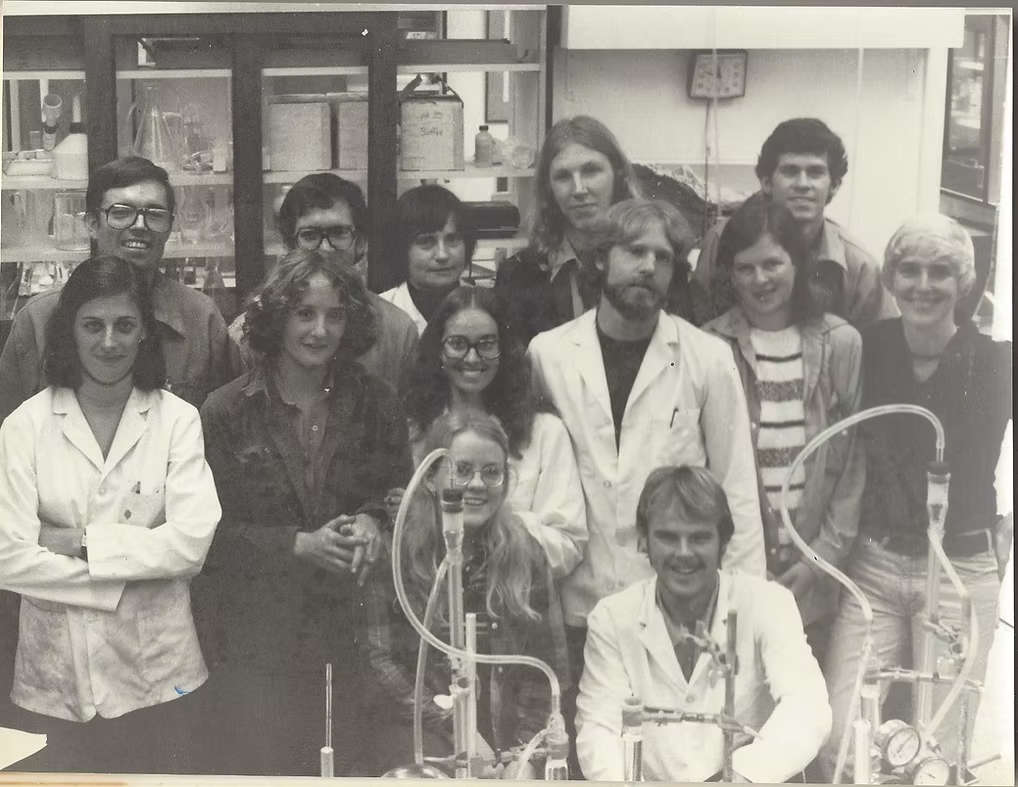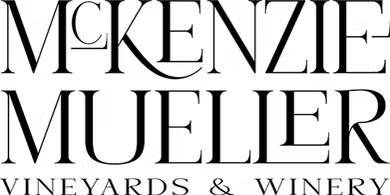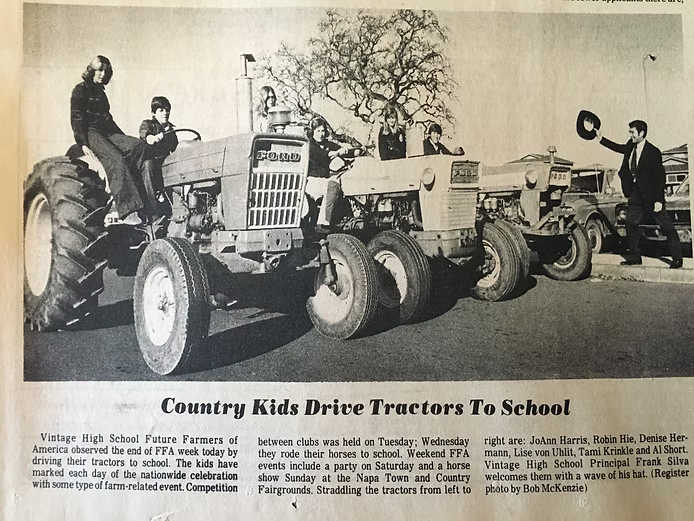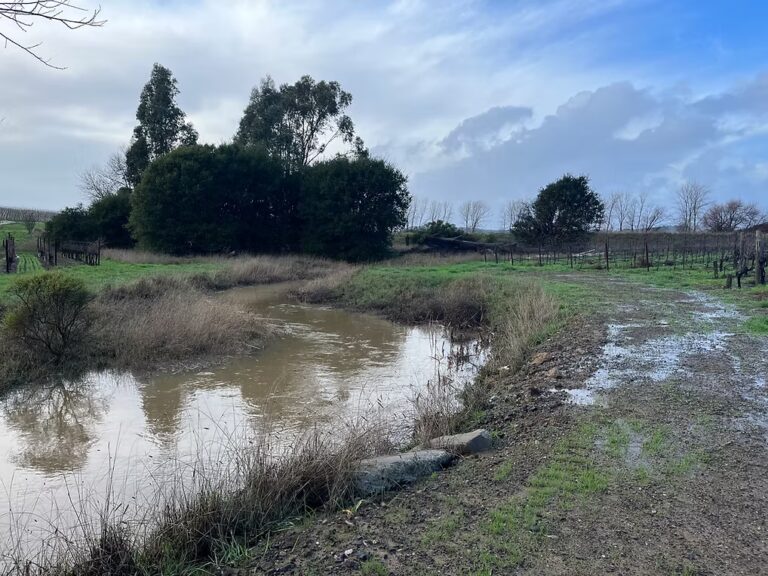From all of us here at McKenzie-Mueller, Happy (belated) Father’s day! I hope some special bottles were popped in celebration! I was happy to be able to spend some time (six feet apart) with my mom and dad–We enjoyed the shade of an oak tree and a nice cold beer.
Originally, when Father’s day started, I had planned on posting a social media tribute to my dad–he is the father to 5 kids, one small business, and 40,000+ vines. As the day went on, I couldn’t seem to find the words that would properly capture how thankful we are–I still don’t have the right words even here in this blog. He has taught us so many lessons; lessons as a father, a boss, a farmer, a winemaker, and a small business owner.
As a winemaker, many of the lessons he has passed to me come from 50+ years in the industry. As we start into this fourth interview–still about his Mondavi days–we chat about some of the lessons learned in his journey to establish his winemaking point of view.
SAM: Something you always say is, “you have to make wine that you like, and hope that others like it too.”
BOB: Yeah, you can be fooled by trying to make something you think other people will like. But people’s taste buds change over time too. So you have to be aware of what it is you like.
SAM: So your time at Mondavi, kind of gave you a chance to hone in on the wines you like and the style you preferred.
BOB: Yes. We had a ranking system when we tasted. We would rank the wines we liked from the top to the bottom. I was just one of about half a dozen people that did the same thing. We kind of took a collaborative approach. Looked at how each wine was and how they worked together in blends. You know, there were a lot of tastings, a lot of tastings.

(Photo: Crew at Mondavi–Bob in glasses first on left in back row.)
SAM: With people in the lab? Cellar?
BOB: People in the lab. Yes, That’s part of it…That is a big part of it. But they also brought in people from the production end of it. And because you couldn’t always get people from the other parts of the winery, there would be employe tastings of the bottled wines. So you’d bring in people from sales & marketing, or accounting, You brought in people from all facets to look at the wines because not only do you have to make good wine, but you have to sell it. It was one big soup of people looking at it all (haha).
SAM: So looking back at the rating system you all used during these tastings—did the ranking correspond to certain vineyards?
BOB: Yes, it did. So it would be the grapes all the way to the wine—if it didn’t get blended out…
SAM: Ok, got it. So what were some of the high ranking vineyards, or vineyards you enjoyed working with?
BOB: Oh boy, ….You know, I found all of them interesting. And I liked something in all of them…with one exception. And that one exception…if the soil was…hmm how will this sound? Let’s just say, if the soil is great for growing tomatoes, it might not be great for growing grapes. You want the grape vine to not just keep growing (too much vigor), you want it to slow down. So again it gets back into the vineyard, the spacing, rootstock, etc. But you have to remember, back then U.C. Davis was recommending planting of 8 foot by 12 foot. That is what, like 540 vines per acre…. And now we are doing, 1250 per/acre? With the 5X7? And we have new rootstocks that are able to withstand phylloxera, and with St. George rootstock, it’s continued to be used, but it’s thought to be best in soil that hasn’t had grapevines before. So now there’s just a whole boat load of new rootstocks. Grapevines and wines takes years to get established and see what they’re really like. So that’s still something that’s being learned—which sites are best. There’s been a lot of learning about what sites are best with certain rootstocks.
But as far as what grapes/vineyards I liked the most—I did like very much the area surrounding Mondavi—called To Kalon. But really, most all of the grapes from the middle of the valley. We dealt more with St. Helena and below—they’re might have been particular outliers—I like all the way from near St. Helena all the way down to Carneros. It just depended on the variety.
Some of the best merlot that I ever tasted, was a Merlot from Rene di Rosa in Carneros. It was better than some of the Cabs we were tasting. But again, I digress…. It just depends on what it is you’re shooting for.
SAM: Right–It depends on what style of wine you’re trying to make.
BOB: Yes. For example: Pinot Noir—do you want something that is stouter and has more tannin? Or do you want something that is light and more gentile? There is just a lot of choices that you as a winemaker can use. If you start from scratch, plant a vineyard, getting it established, making the wine, seeing how it all works, getting the most out of that site takes decades.
SAM: Yes, I think about that. We have had some people that have purchased grapes from us for one season only—I feel like it takes multiple vintages to really get to know the site. It takes time to get to know the nuances of each vineyard site. And like you mentioned… Los Carneros fruit isn’t going to act the same way, or show the same analysis numbers as say…. St. Helena fruit. As you said, different rootstocks, different soils, different micro climates, etc.
BOB: but a lot of people that are buying fruit, it’s a small percentage of their overall program. So you know, if it’s good plus, or good minus, as long as it’s in that good range, it will fit into their program. I would assume that their main supply is locked down, because it’s really important to know their base wine. Any additions to their program—small lots like those people get from us, let’s say, has to work well with their particular base.
SAM: Right. …well, that was a very nice answer to my original question: “which vineyards did you enjoy working with?” I think you said they were all good? Haha.
BOB: Well, when I see really heavy, black clay soil, it makes me think about running the other way. But if I have pretty well drained soil and a good vineyard manager, that’s a good start. It’s about getting the fruit you want/need for the wine you are making. Again, when you taste several different Cabernets, there is variability there, so, it doesn’t mean you only like one Cab. You know, you might like this Cabernet today, and a different one tomorrow, or maybe a long with a steak I want this Cabernet, and different one with pasta. It’s hard to put your finger on a bullseye. I’m glad that there is variability to tell you the truth.
SAM: Yes, the love of wine is the love of variety…. Switching gears a little bit, The other day during a virtual tasting of Cabernet Sauvignon, I was asked about unfiltered vs. filtered wines. [For those reading this interview, all of our wines are unfiltered.] I was wondering if you might talk a little bit about your time at Mondavi and how you came to prefer unfiltered wines?
BOB: Well, you know from your experience, when you taste a wine that’s freshly made versus that same wine when you taste it after a couple years—it’s changed. So a wine evolves and it’s a complex thing. In a lot of ways, the specifics of its evolution is mysterious. I’ve always looked at wine as a living thing. It has living yeast, or living bacteria, and other things in it—some of it bad and you try to keep it from going down the wrong path with the bad stuff.
We had a time in the 70’s when Brettanomyces kind of jumped up—and that’s a ‘spoilage’ yeast. And it was questioned, “what is the best way to prevent it from rearing its head?” And some of the discussion was to look at filtration to remove any yeast in there—and how fine, how exact…did you want it to take out bacteria too? So we did some experiments with some very important wines—the 1974 Cabernets. Several basic trials done on it. One was unfiltered. One was S200—so kind of a rough filtration. And some very tight filtration—so nothing should get through.
We looked at the wines right after filtration. There was the stripping action, as you would expect with filtration going through pads…with the cellulose and dare I say other things? But we looked at the wines over number of years. And over the years, the wine that stood up the best, I thought, was the unfiltered. And next was the roughly filtered. And the least preferred was the one that was filtered.
Now that could change again with even more age over the years…and end up going in the reverse direction. But the risk was worth it, I thought. The unfiltered—I would describe it as the wine as alive. And if it’s properly taken care of, when you put it in the bottle, it lives and develops more nuance and more character. But you run the risk of something bad happening. Going volatile—meaning vinigar-y— but once it’s bottled there isn’t to much risk of that happening. But Brettanomycyes is a real issue, and if it rears its head when you bottle it…. it’s not very pleasant to taste a wine or smell a wine that has Brett actively growing in it.
But again, taking it out, it kind of abbreviates the development the wine… it’s good, but it doesn’t go much beyond and get better. So, the unfiltered, not only is it good when you first bottle it, but it will get better over time. And that’s my experience—I can’t say that there was 100% agreement, some people preferred the filtered but I preferred the unfiltered wines. But again, you’re your own best taster.
And it’s funny because there is always a risk in going with the unfiltered—but most top wines that I found were usually either unfiltered or only roughly filtered. And that’s not to say you’d leave a Johannesburg Riesling unfiltered…or a Chenin Blanc, especially if it’s sweet…because you don’t want it to referment, and the only way to make sure a wine with Residual sugar doesn’t referment is to filter. Again, I’ve chosen to make wines that are Dry—not sweet—and that’s why I can get away with not filtering.
SAM: Like you said, it’s about personal preference. There are some that would disagree and prefer a wine to be filtered–“no ‘wine diamonds’ or sediment, please!” haha. But, how great that Mondavi encouraged these trials and you were able to confidently find your preferred wine style…
BOB: Yes, it was really great. Lots of insightful tastings and really got to know qualities of fruit coming from the different AVAs.


